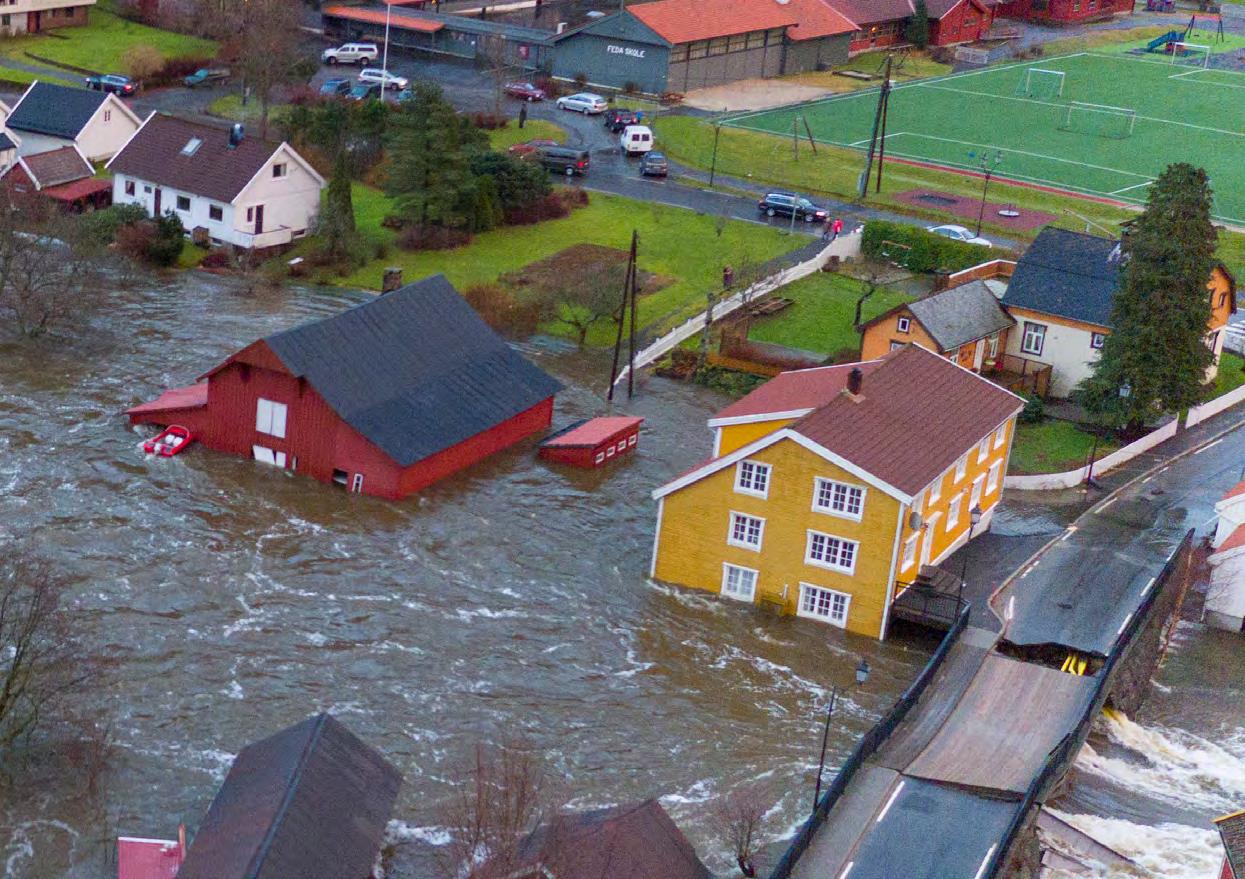
2 minute read
The electronic communications infrastructure is exposed to weather conditions that are becoming more extreme
The new Intergovernmental Panel on Climate Change report published in August 2021 states even more clearly than before that anthropogenic climate change has resulted in extensive changes in the atmosphere, oceans and ecosystems.
In the years ahead, the electronic communications infrastructure will be subject to stronger impacts in the form of extreme weather conditions and serious natural events. There may be more extreme wind conditions, extreme precipitation levels with subsequent landslides, snow/ice problems and flooding of rivers and watercourses. We must also expect prolonged periods of drought, with subsequent forest and outfield fires.
In 2019, Nkom undertook a detailed mapping and vulnerability analysis of the electronic communications infrastructure in Finnmark. Several measures were implemented with government funding.
An equivalent analysis will be conducted in Troms in 2021, and Report to the Norwegian Parliament 28 (2020-2021) – Our common digital foundation – proposes at least five new regional analyses.
Nkom has also initiated a project together with the Norwegian Water Resources and Energy Directorate (NVE) to strengthen cooperation with the power sector on emergency preparedness. In 2020, the electronic communications industry invested a total of NOK 12.6 billion in electronic communications networks and services, the highest level of investment ever in any year. Much of the investment concerns providing access to electronic communications services, as the basis for increased digitalisation and greater efficiency in society.
This will gradually lead to even stronger dependence on this infrastructure. In addition, critical functions in society, such as emergency and rescue services, will be realised in the commercial networks. The investments must therefore increasingly be directed towards strengthening the infrastructure.
Nkom can see a particular need to reinforce the ‘periphery’ of the electronic communications networks, such as the regional and access networks. This part of the electronic communications infrastructure is most vulnerable to stresses from nature. This will require increased investment in robust networks, redundancy and reserve power supplies.
Measures

Nkom will follow up the strategy for a secure and robust electronic communications infrastructure in Report to the Norwegian Parliament 28 (2020-2021) – Our common digital foundation. Nkom is also working on revising the targets for the electronic communications infrastructure published in the “Robuste og sikre nett” (Robust and Secure Networks) (ROBIN) report from 2017.
In the development of new infrastructure, the electronic communications providers must give weight to climate adjustment measures. Security and resilience are increasingly becoming a competitive advantage. Providers should therefore raise awareness, provide guidance and cooperate with customers on security- and resilienceenhancing measures.
Municipalities and other public and private enterprises should assess natural risks and vulnerabilities regarding their own municipality/ activities and apply this assessment to the procurement of critical electronic communications services. They should assess alternative security solutions and products, and any independent backup solutions. For major procurement projects, reinforcement of the infrastructure may be an element of the negotiation with the provider. There should be an access obligation requirement for other providers of such reinforcement, in order to avoid lock-in effects. Another important measure to facilitate efficient development and reinforcement is to register infrastructure and building and construction work in the electronic communications portal (www.ekomportalen.nkom.no).
Address for visitors: Nygård 1, Lillesand, Norway Postal address: Postbox 93, NO-4791 Lillesand Tel. no.: (+47) 22 82 46 00 nkom.no







